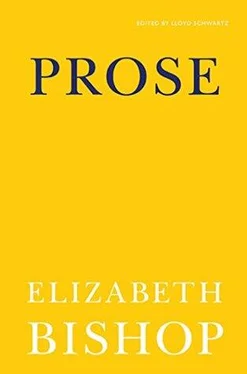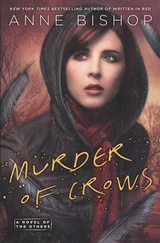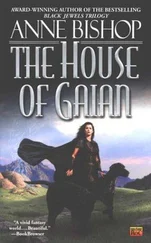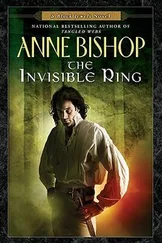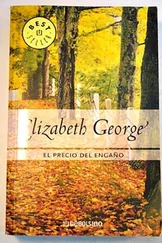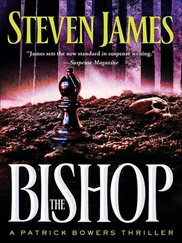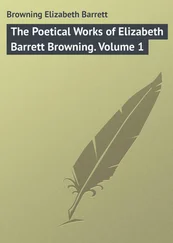Or perhaps the painter did the faces — clearer and brighter than the rest of the pictures, and in Uncle Neddy’s case slightly out of proportion, surely — from “life,” the clothes from tintypes, and the rest from his imagination. He may have arrived in the village with his canvases already filled in, the unrecognizable carpets, the round table and improbable chair, ready and waiting to be stood on and leaned on. Did Uncle Neddy insist, “I want to be painted with the chair”? Did the two children fight, more than seventy years ago, over which one would have which background?
Well, Uncle Neddy grew up; he skated a great deal, winters (without bundling up), went through all the grades of the village school, and very early (I heard much later) began to fall in love and to — alas for Neddy—“chase women.” I even heard, overheard, rather, that there had been prolonged family worry about a “widow.” He must have begun drinking about this time, too, although that was never mentioned until years later when he became, on occasion, a public disgrace. It was hard to know what to do with him; he showed all the classical symptoms of being “wild.” In vain family prayers morning and night, the childhood Bible-reading, choir practice, Sunday School (“Sabbath School” my grandfather called it), church itself, Friday prayer meetings, and the annual revivals at which Uncle Neddy went forward and repented of all. At one of these, Uncle Neddy even took the “pledge,” the temperance pledge that he could still recite to me years later, although he had broken it heaven only knew how many times by then:
Trusting in help from heaven above
We pledge ourselves to works of love,
Resolving that we will not make
Or sell or buy or give or take
Rum, Brandy, Whiskey, Cordials fine,
Gin, Cider, Porter, Ale or Wine.
Tobacco, too, we will not use
And trust that we may always choose
A place among the wise and good
And speak and act as Christians should.
This was called the “Pledge of the Iron Age Band of Hope.” The “Band of Hope” was an inspirational society for younger members of the church, but why “Iron Age”? Uncle Neddy didn’t know and I never found out. It became vaguely associated in my mind with his profession. Because, after all these moral incentives, Uncle Neddy inevitably, immediately, began to show signs of being “wild” all over again and finally he was apprenticed to a tinsmith, to learn a trade — tinsmithing and installing and repairing wood-burning furnaces. And then, still very young, he married Aunt Hat. I got the impression later (I was a little pitcher with big ears) that perhaps he “had” to marry her, but I may be doing him an injustice.
Redheaded, rawboned, green-eyed, handsome, Aunt Hat came from Galway Mines, a sort of ghost town twenty miles off, where iron mining and smelting were still carried on in a reduced and primitive way. It had once been more flourishing, but I remember boarded-up houses, boarded-up stores with rotting wooden sidewalks in front of them, and the many deep black or dark red holes that disfigured the hills. Also a mountainous slag heap, dead, gray, and glistening. Long before I was born, one of these slag heaps, built up for years, I don’t know why, right beside or on the river that farther downstream ran through our village, had given way and there had been a flood. I heard this story many times because my grandparents’ house was on the lower side of the village, near the river, and it had been flooded. A warning had been given, but in the excitement of rescuing the older children, the clock, the cow and horse, my grandmother forgot the latest baby (later my aunt), and my grandfather had dashed back into the house to find her floating peacefully in her wooden cradle, bobbing over the kitchen floor. (But after this the poor baby had erysipelas.)
If Uncle Neddy was a “devil,” a feeble, smokey-black one, Aunt Hat was a red, real one — redheaded, freckled, red-knuckled, strong, all fierce fire and flame. There was something of the Old Nick about her. They complemented each other; they were devils together. Rumor had it that the only other redhead for miles around was the parish priest at Galway Mines — the only Catholic community in the county. True or not, the village gossips drew their strictly Protestant and cruel conclusions.
My own recollections begin now, things I saw or heard: Uncle Neddy is a tinsmith, a married man, the father of three living and one or two dead children. He has a big shop across the green from my grandparents’ house, in the only part of my grandfather’s former tannery not torn down. (The local tanning trade had come to an end before I was born, when chemicals replaced tanbark.) From the entrance, with double doors, the shop starts out fairly bright; a large section is devoted to “store” galvanized pails and enameled pots and pans, two or three or more black kitchen ranges with nickel trimmings, farming implements, and fishing rods — the last because fishing was Uncle Neddy’s passion. But the farther in one goes the darker and more gloomy it becomes; the floor is covered with acrid-smelling, glinting, black dust and the workbench stretching across the far end is black, with glints of silver. Night descends as one walks back, then daylight grows as one reaches the dirty windows above the workbench. This night sky of Uncle Neddy’s is hung with the things he makes himself: milk pails, their bottoms shining like moons; flashing tin mugs in different sizes; watering pots like comets, in among big dull lengths of stove pipe with wrinkled blue joints like elephants’ legs dangling overhead.
When he was at work, Uncle Neddy always wore a black leather cap, or perhaps it was so shiny with wear it looked like leather, and black, black overalls. He chewed tobacco. The plugs of chewing tobacco had a little red tin apple pressed into one corner; these he took off and gave to me. He loved children and was very good with them. When he kissed me, he smelled violently of “Apple” chewing tobacco and his sooty chin was very scratchy — perhaps he shaved only on Sundays. Frequently he smelled of something else violent, too, and I remember a black or dark brown bottle, unlabeled, kept in the murk under the workbench, being lifted out for a hasty swig.
The shop was full of fascinating things to look at, but surely most of their charm lay in the fact that, besides being brand-new, they were all out of place. Who would expect to see comfortable-looking kitchen stoves, with names like “Magee Ideal” and “Magic Home” on their oven doors, standing leaning sidewise, in a shop? Stone cold, too, with empty, brand-new teakettles hanging from the rafters over them and the stove-lid lifters hanging up in a bunch, like dried herbs? Or pots and pans, enameled brown or a marbleized blue-and-white, sitting on the floor? Or dozens of tin mugs, the kind we used every day of our lives and that Uncle Neddy actually made, hanging overhead, brilliantly new and clean, not dull and brown, the way they got at home? And kitchen pumps, sticky red or green, and the taller, thinner variety of pump for the barnyard, lying on the floor? Besides all these things there were fascinating black machines attached to the workbench and worked by hand. One was for rolling the blue-black sheet iron into stovepipes; one made turned-over edges on strips of tin so that they wouldn’t cut the fingers, and there were others of more mysterious functions, all black and sinister. There were blowtorches and a sort of miniature forge, little anvils, heavy shears in all sizes, wooden mallets, boxes of stubby, gray-blue, flat-headed rivets and, best of all, solder. It came in thick silver rods, with a trade name stamped along them. What I liked best was to watch Uncle Neddy heat the end of a rod to the melting point and dribble it quickly to join a wide ribbon of tin and make a mug, sometimes a child-size mug, then solder on a strip already folded under on both sides in the folding machine for the handle. When they were cold, drops of solder that fell to the dirty floor could be picked up, pure silver, cool and heavy, and saved. Under the bench were piles of bright scraps of tin with sharp edges, curved shapes, triangles, pieces with holes in them, as if they’d been cut from paper, and prettiest of all, thin tin shavings, curled up tight, like springs. Occasionally, Uncle Neddy would let me help him hold a stick of solder and dribble it around the bottom of a pail. This was thrilling, but oh, to be able to write one’s name with it, in silver letters! As he worked, bent over, clipping, hammering, soldering, he chewed tobacco and spat long black spits under the bench. He was like a black snail, a rather quick but cautious snail, leaving a silvery, shiny trail of solder.
Читать дальше
